 Search by Keyword
Sign Up Below for our MONTHLY BEATLES TRIVIA QUIZ!
|
"BABY'S IN BLACK"
(John Lennon - Paul McCartney)
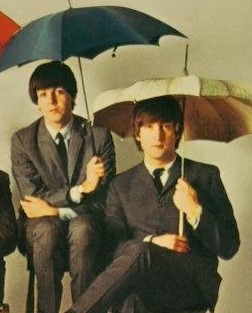 The output of the legendary songwriting team of John Lennon and Paul McCartney has become one of the most loved and highly esteemed catalogs in popular music. With such diverse personalities, which became even more diverse as their partnership developed through the Beatle years, they maintained their cohesiveness by adopting various songwriting formulas. While they started off in their formative years skipping school to meet and write songs together from scratch, they found this practice somewhat burdensome to maintain. The output of the legendary songwriting team of John Lennon and Paul McCartney has become one of the most loved and highly esteemed catalogs in popular music. With such diverse personalities, which became even more diverse as their partnership developed through the Beatle years, they maintained their cohesiveness by adopting various songwriting formulas. While they started off in their formative years skipping school to meet and write songs together from scratch, they found this practice somewhat burdensome to maintain.
 "It would be daft to sit around waiting for a partner to finish your song off with you," McCartney explained back then. "If you happen to be on your own, you might as well get it finished yourself. If I get stuck on the middle eight of a new number, I give up, knowing that when I see John he will finish it off for me. He'll bring a new approach to it and that particular song will finish up half and half, Lennon and McCartney." "It would be daft to sit around waiting for a partner to finish your song off with you," McCartney explained back then. "If you happen to be on your own, you might as well get it finished yourself. If I get stuck on the middle eight of a new number, I give up, knowing that when I see John he will finish it off for me. He'll bring a new approach to it and that particular song will finish up half and half, Lennon and McCartney."
 They decided that this newer approach, finishing off a near-completed idea from the other partner, was a more feasible way to keep the songwriting team intact. Sometimes they would sit together to finish off someone's composition, such as in the case of "With A Little Help From My Friends," or add an idea here or there, as with "Getting Better." And while they did stray into writing songs completely by themselves at times, they kept up the 'finishing off' formula throughout The Beatles career. They decided that this newer approach, finishing off a near-completed idea from the other partner, was a more feasible way to keep the songwriting team intact. Sometimes they would sit together to finish off someone's composition, such as in the case of "With A Little Help From My Friends," or add an idea here or there, as with "Getting Better." And while they did stray into writing songs completely by themselves at times, they kept up the 'finishing off' formula throughout The Beatles career.
 Earlier on, however, they did manage to sit "nose to nose," as Lennon would refer to it, from time to time. This format bore great rewards, such as with "From Me To You" and "I Want To Hold Your Hand." In this case, John and Paul got together at Lennon's Kenwood home sometime in July of 1964 to write what became one of the very last songs written together from scratch. The result was "Baby's In Black." Earlier on, however, they did manage to sit "nose to nose," as Lennon would refer to it, from time to time. This format bore great rewards, such as with "From Me To You" and "I Want To Hold Your Hand." In this case, John and Paul got together at Lennon's Kenwood home sometime in July of 1964 to write what became one of the very last songs written together from scratch. The result was "Baby's In Black."
Songwriting History
After a hectic world tour of June 1964, The Beatles had a relatively relaxed July, making local British TV appearances and concert dates, ending in a brief Swedish tour. Even though their third British album "A Hard Day's Night" was released in July, John and Paul took advantage of this relaxed month to start writing songs for their next album.
 The two of them would almost always meet up at John's newly acquired Kenwood home for songwriting, since the music room at the Asher's House where Paul stayed wasn't always available and also because John didn't drive. "It was always nice to have an excuse to drive out into the country," McCartney explains, "so that generally meant that I got out to John's house." The two of them would almost always meet up at John's newly acquired Kenwood home for songwriting, since the music room at the Asher's House where Paul stayed wasn't always available and also because John didn't drive. "It was always nice to have an excuse to drive out into the country," McCartney explains, "so that generally meant that I got out to John's house."
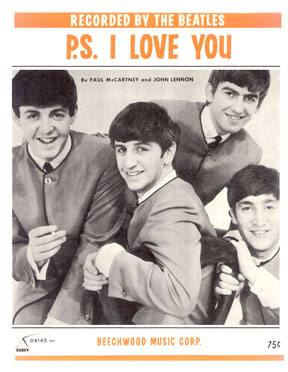 "Baby's In Black" was "written in the same room," as John commented in 1980. "It was very much co-written," Paul concurs. They got together on this day with the intention of writing something different from their usual. "We got more and more free to get into ourselves," McCartney remembers. "Our student selves rather than 'we must please the girls and make money,' which is all that 'From Me To You,' 'Thank You Girl,' P.S. I Love You' is about...We wanted to write something a little bit darker, bluesy, the title's dark anyway...more grown up rather than just straight pop. It was more 'baby's in black' as in mourning. Our favorite color was black, as well." "Baby's In Black" was "written in the same room," as John commented in 1980. "It was very much co-written," Paul concurs. They got together on this day with the intention of writing something different from their usual. "We got more and more free to get into ourselves," McCartney remembers. "Our student selves rather than 'we must please the girls and make money,' which is all that 'From Me To You,' 'Thank You Girl,' P.S. I Love You' is about...We wanted to write something a little bit darker, bluesy, the title's dark anyway...more grown up rather than just straight pop. It was more 'baby's in black' as in mourning. Our favorite color was black, as well."
 The time signature was also a marked difference for a Lennon / McCartney song. "'Baby's In Black' we did because we liked waltz-time," McCartney continued. "We'd used to do 'If You Gotta Make A Fool Of Somebody,' (by James Ray in 1961) a cool three-four blues thing. And other bands would notice that and say, 'Shit man, you're doing something in three-four.' So we'd got known for that...It's ("Baby's In Black") in 3/4 time, one of the first waltzes we wrote, which was interesting for us because most of our stuff's in 4/4." The time signature was also a marked difference for a Lennon / McCartney song. "'Baby's In Black' we did because we liked waltz-time," McCartney continued. "We'd used to do 'If You Gotta Make A Fool Of Somebody,' (by James Ray in 1961) a cool three-four blues thing. And other bands would notice that and say, 'Shit man, you're doing something in three-four.' So we'd got known for that...It's ("Baby's In Black") in 3/4 time, one of the first waltzes we wrote, which was interesting for us because most of our stuff's in 4/4."
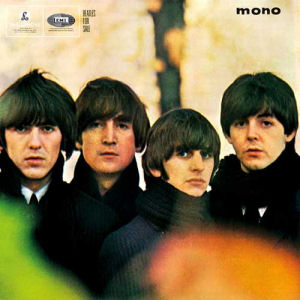 It was quite apparent that they were very proud of "Baby's In Black," evidenced by it being the first song they took into the studio to record for the "Beatles For Sale" album and because they continued to perform it live right through to their final concert performance in San Francisco on August 29th, 1966. "We rather liked this one," McCartney confirms. "It was not so much a work job; there was a bit more cred about this one. It's got a good middle." It was quite apparent that they were very proud of "Baby's In Black," evidenced by it being the first song they took into the studio to record for the "Beatles For Sale" album and because they continued to perform it live right through to their final concert performance in San Francisco on August 29th, 1966. "We rather liked this one," McCartney confirms. "It was not so much a work job; there was a bit more cred about this one. It's got a good middle."
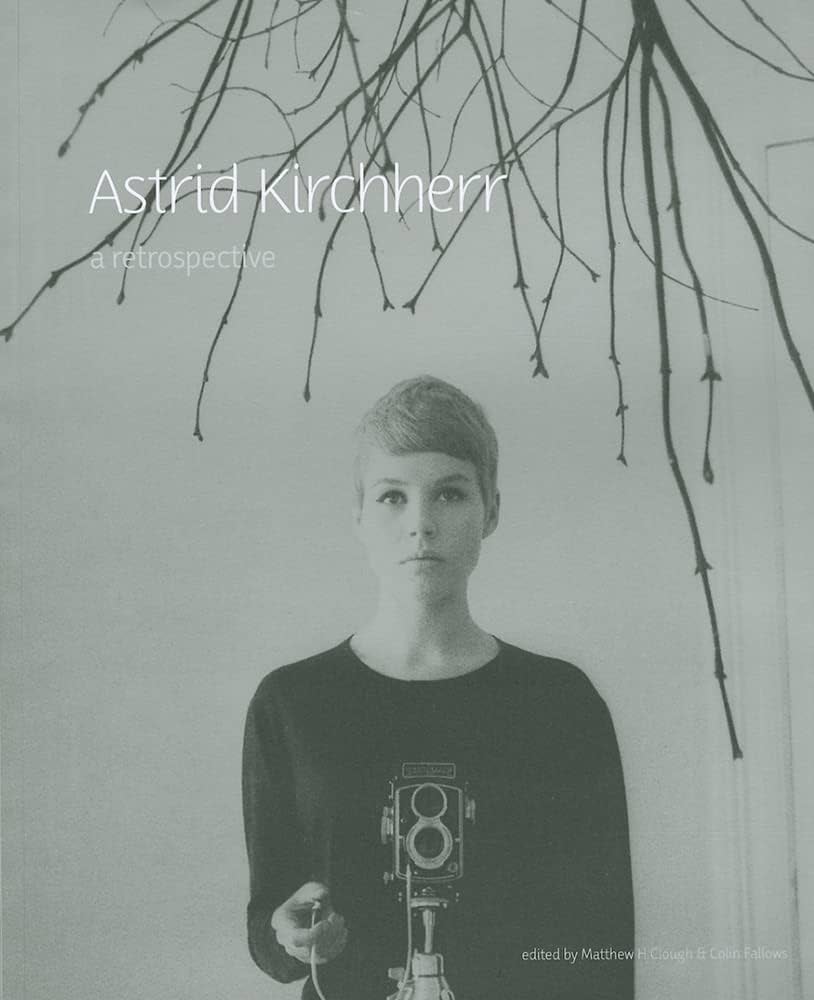 It has been speculated by some writers that the lyrics of this song concern John persuing Astrid Kirchherr, the former girlfriend of the late Stu Sutcliffe. It has become known that John had an interest in Astrid during her relationship with the former Beatle, and after Stu's death John supposedly wanted to step in, but she was still mourning Stu's death. Nothing has ever been confirmed about this rumor, only the hint from Paul that the reference to the woman wearing black did indeed indicate "mourning." It has been speculated by some writers that the lyrics of this song concern John persuing Astrid Kirchherr, the former girlfriend of the late Stu Sutcliffe. It has become known that John had an interest in Astrid during her relationship with the former Beatle, and after Stu's death John supposedly wanted to step in, but she was still mourning Stu's death. Nothing has ever been confirmed about this rumor, only the hint from Paul that the reference to the woman wearing black did indeed indicate "mourning."
Recording History
The Beatles entered EMI Studio Two on August 11th, 1964 to begin recording their fourth British album “Beatles For Sale,” which was due out in December. This three hour evening session, from 7 to 11 pm, was devoted entirely to John and Paul’s recent composition “Baby’s In Black.”
 It took fourteen takes of the rhythm track to get a keeper, which encompassed John on acoustic rhythm guitar, George on electric lead guitar, Paul on bass, Ringo on drums along with harmonized vocals from John and Paul. "That was us being the Everly's," Paul remarked in his 2021 Hulu documentary series "McCartney 3,2,1," The Everly Brothers being acknowledged as the template for their harmonies, John taking the lower Don Everly melody line and Paul taking the high harmony Phil Everly role. After "take 14," this being deemed the best, Lennon was heard commenting, “Can we hear that rubbish back?” It took fourteen takes of the rhythm track to get a keeper, which encompassed John on acoustic rhythm guitar, George on electric lead guitar, Paul on bass, Ringo on drums along with harmonized vocals from John and Paul. "That was us being the Everly's," Paul remarked in his 2021 Hulu documentary series "McCartney 3,2,1," The Everly Brothers being acknowledged as the template for their harmonies, John taking the lower Don Everly melody line and Paul taking the high harmony Phil Everly role. After "take 14," this being deemed the best, Lennon was heard commenting, “Can we hear that rubbish back?”
 Only five of these takes made it through the entire song, five others not making it past the guitar introduction from George Harrison. In fact, George’s lead guitar fills throughout the song as well as his solo, which entailed him bending various notes with his tremolo arm, were the sticky points that led them to take the entire three hours to finish the song. Thirteen edit pieces of the twangy introductory notes were attempted, but none of them ended up being used on the song at all. They worked out another solution. Only five of these takes made it through the entire song, five others not making it past the guitar introduction from George Harrison. In fact, George’s lead guitar fills throughout the song as well as his solo, which entailed him bending various notes with his tremolo arm, were the sticky points that led them to take the entire three hours to finish the song. Thirteen edit pieces of the twangy introductory notes were attempted, but none of them ended up being used on the song at all. They worked out another solution.
 In the November 1987 issue of Guitar Player magazine, George Harrison explained how they achieved the volume swells heard on the lead guitar parts of this song. While admiring Colin Manley, guitarist for the British group The Remo Four, and his use of a volume pedal, Harrison stated: “I could never co-ordinate it…So what we’d do is, I played the part, and John would kneel down in front of me and turn my guitar’s volume control.” In the November 1987 issue of Guitar Player magazine, George Harrison explained how they achieved the volume swells heard on the lead guitar parts of this song. While admiring Colin Manley, guitarist for the British group The Remo Four, and his use of a volume pedal, Harrison stated: “I could never co-ordinate it…So what we’d do is, I played the part, and John would kneel down in front of me and turn my guitar’s volume control.”
 This unorthodox lead guitar style prompted George Martin to exclaim “You want the beginning like that, do you?” This definitely indicated the change in roles George Martin was beginning to have in the studio with The Beatles. The group had specific ideas that they insisted on using, and George Martin began viewing them more as artists than as youngsters needing direction, even if it was against his better judgment. This unorthodox lead guitar style prompted George Martin to exclaim “You want the beginning like that, do you?” This definitely indicated the change in roles George Martin was beginning to have in the studio with The Beatles. The group had specific ideas that they insisted on using, and George Martin began viewing them more as artists than as youngsters needing direction, even if it was against his better judgment.
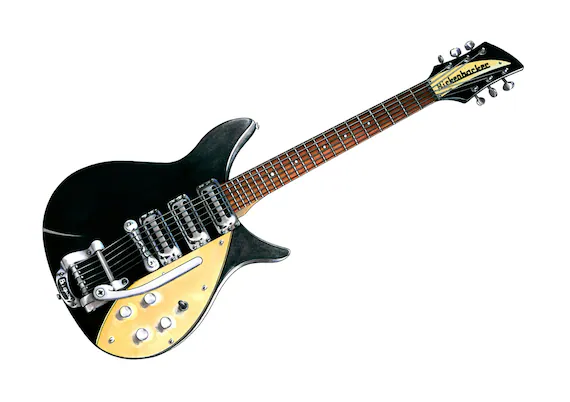 Some other overdubbing was necessary as well, which included both John and Paul double-tracking their vocals during both occurrences of the bridge (“Oh, how long will it take…”) and during the chorus after the second bridge. This gave a fullness that creates an illusion of multiple harmonies when in fact there were only two. A tambourine played by Ringo was also overdubbed, which came in very quietly on the second bridge with the accent on the second and fifth beat of each measure, switching to the first and fourth beat after the second measure of the final verse. John also added electric rhythm guitar strumming in the bridges and the choruses that follow them. Some other overdubbing was necessary as well, which included both John and Paul double-tracking their vocals during both occurrences of the bridge (“Oh, how long will it take…”) and during the chorus after the second bridge. This gave a fullness that creates an illusion of multiple harmonies when in fact there were only two. A tambourine played by Ringo was also overdubbed, which came in very quietly on the second bridge with the accent on the second and fifth beat of each measure, switching to the first and fourth beat after the second measure of the final verse. John also added electric rhythm guitar strumming in the bridges and the choruses that follow them.
 The first mono mix was made on August 14th, 1964 in between The Beatles' next recording sessions on that day, although this mix was never used. October 26th, 1964 was the date the actual mono mix was created in the EMI Studio Two control room by George Martin, engineer Norman Smith and future Moody Blues producer Tony Clark as 2nd engineer. The first mono mix was made on August 14th, 1964 in between The Beatles' next recording sessions on that day, although this mix was never used. October 26th, 1964 was the date the actual mono mix was created in the EMI Studio Two control room by George Martin, engineer Norman Smith and future Moody Blues producer Tony Clark as 2nd engineer.
 The stereo mix was made on November 4th, 1964 in the control room of EMI Studio Two by George Martin, Norman Smith and 2nd engineer Mike Stone. The original rhythm track is heard primarily in the left channel while the vocals are centered in the mix. All of George and John’s guitar overdubs are heard in the right channel exclusively, as is Ringo’s tambourine overdub. The stereo mix was made on November 4th, 1964 in the control room of EMI Studio Two by George Martin, Norman Smith and 2nd engineer Mike Stone. The original rhythm track is heard primarily in the left channel while the vocals are centered in the mix. All of George and John’s guitar overdubs are heard in the right channel exclusively, as is Ringo’s tambourine overdub.
 Two more recording sessions for “Baby’s In Black” resulted from their 1965 concerts at the Hollywood Bowl in Los Angeles, California. Capitol Records decided to record these appearances as they did in 1964 just in case The Beatles gave them the thumbs up this time to release a live album at the end of year. They didn’t. The August 29th, 1965 recording, which was produced by Karl Engemann and engineered by Hugh Davies, was unlistenable because of technical problems, but the August 30th, 1965 recording fared much better. The producer on this session was Capitol Vice-President Voyle Gilmore with Pete Abbott engineering. Although the recording of “Baby’s In Black” made on this day didn’t get released on the long-awaited “The Beatles At The Hollywood Bowl” album in 1977, it did surface on the single “Real Love” released in 1996. This recording, however, was included as a bonus track on the 2016 released album "Live At The Hollywood Bowl." Two more recording sessions for “Baby’s In Black” resulted from their 1965 concerts at the Hollywood Bowl in Los Angeles, California. Capitol Records decided to record these appearances as they did in 1964 just in case The Beatles gave them the thumbs up this time to release a live album at the end of year. They didn’t. The August 29th, 1965 recording, which was produced by Karl Engemann and engineered by Hugh Davies, was unlistenable because of technical problems, but the August 30th, 1965 recording fared much better. The producer on this session was Capitol Vice-President Voyle Gilmore with Pete Abbott engineering. Although the recording of “Baby’s In Black” made on this day didn’t get released on the long-awaited “The Beatles At The Hollywood Bowl” album in 1977, it did surface on the single “Real Love” released in 1996. This recording, however, was included as a bonus track on the 2016 released album "Live At The Hollywood Bowl."
 Another recording session was held on January 5th, 1966 at CTS Studios in London. This was in order to augment the live recording of “Baby’s In Black,” as well as other songs, from the August 15th, 1965 live concert at Shea Stadium in New York City. Paul added a bass track to the song in preparation for the television film "The Beatles At Shea Stadium." Another recording session was held on January 5th, 1966 at CTS Studios in London. This was in order to augment the live recording of “Baby’s In Black,” as well as other songs, from the August 15th, 1965 live concert at Shea Stadium in New York City. Paul added a bass track to the song in preparation for the television film "The Beatles At Shea Stadium."
 Interestingly, their final live performance on August 29th, 1966 at Candlestick Park included "Baby's In Black." As detailed in Keith Badman's book "The Beatles Off The Record," the group's press officer Tony Barrow recalls: "There was a sort of end of term spirit thing going on, and there was also this kind of feeling amongst all of us around The Beatles, that this might just be the last concert that they will ever do. I remember Paul, casually, at the very last minute, saying, 'Have you got your cassette recorder with you?' and I said, 'Yes, of course.' Paul then said, 'Tape it, will you? Tape the show,' which I did, literally just holding the microphone up in the middle of the field. As a personal souvenir of the occasion, it was a very nice thing to have." Even though Tony Barrow insists that he only made one copy of the tape, which he had locked in a drawer in his London office, and gave the original to Paul, this recording has been available on bootleg releases throughout the years. Interestingly, their final live performance on August 29th, 1966 at Candlestick Park included "Baby's In Black." As detailed in Keith Badman's book "The Beatles Off The Record," the group's press officer Tony Barrow recalls: "There was a sort of end of term spirit thing going on, and there was also this kind of feeling amongst all of us around The Beatles, that this might just be the last concert that they will ever do. I remember Paul, casually, at the very last minute, saying, 'Have you got your cassette recorder with you?' and I said, 'Yes, of course.' Paul then said, 'Tape it, will you? Tape the show,' which I did, literally just holding the microphone up in the middle of the field. As a personal souvenir of the occasion, it was a very nice thing to have." Even though Tony Barrow insists that he only made one copy of the tape, which he had locked in a drawer in his London office, and gave the original to Paul, this recording has been available on bootleg releases throughout the years.
Song Structure and Style
 Lennon and McCartney were becoming more comfortable with the use of a chorus, unlike the common 'verse/ verse/ bridge/ verse' structure of their earlier compositions. For "Baby's In Black," we have a complicated 'chorus/ verse/ chorus/ verse/ bridge/ chorus/ chorus (solo)/ bridge/ chorus/ verse/ chorus" formula, which would work out to be ababcaacaba. Although McCartney (and some writers) mistakenly identify it as being in 3/4 time, the song is actually in 6/8 time and performed in a very "country and western" (or hillbilly) style, especially in regards to the melody lines and vocal delivery. Lennon and McCartney were becoming more comfortable with the use of a chorus, unlike the common 'verse/ verse/ bridge/ verse' structure of their earlier compositions. For "Baby's In Black," we have a complicated 'chorus/ verse/ chorus/ verse/ bridge/ chorus/ chorus (solo)/ bridge/ chorus/ verse/ chorus" formula, which would work out to be ababcaacaba. Although McCartney (and some writers) mistakenly identify it as being in 3/4 time, the song is actually in 6/8 time and performed in a very "country and western" (or hillbilly) style, especially in regards to the melody lines and vocal delivery.
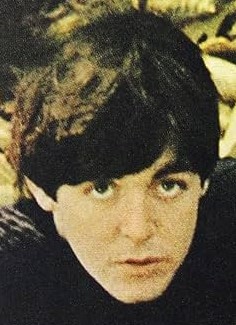 Regarding the melody lines they sang, McCartney explains, "It was very much co-written and we both sang it. Sometimes the harmony that I was writing in sympathy to John's melody would take over and become a stronger melody. Suddenly a piebald rabbit came out of the hat! When people wrote out the music score they would ask, 'Which one is the melody?' because it was so co-written that you could actually take either." Regarding the melody lines they sang, McCartney explains, "It was very much co-written and we both sang it. Sometimes the harmony that I was writing in sympathy to John's melody would take over and become a stronger melody. Suddenly a piebald rabbit came out of the hat! When people wrote out the music score they would ask, 'Which one is the melody?' because it was so co-written that you could actually take either."
 While Lennon and McCartney may have considered John's lower part the melody and Paul's higher part the harmony, as was usually the case, sheet music many times showed both as melody lines while some editions showed John's lower part as the melody in the chorus and verses and Paul's dominant higher harmony as the melody in the bridge. While Lennon and McCartney may have considered John's lower part the melody and Paul's higher part the harmony, as was usually the case, sheet music many times showed both as melody lines while some editions showed John's lower part as the melody in the chorus and verses and Paul's dominant higher harmony as the melody in the bridge.
An examination of the song begins with the two-measure introduction, the first measure being an awkward but distinctive guitar run from George Harrison which signals the band to kick in for the second measure. The chorus then kicks in immediately on the downbeat with John and Paul's single-tracked harmonies. The six-measure chorus is made up of three melodic phrases that, while very distinguishable in the song, unusually consist of the lowest notes of the entire song. The last measure consists of a repeat of George Harrison's introductory guitar passage, which segues nicely into the first verse.
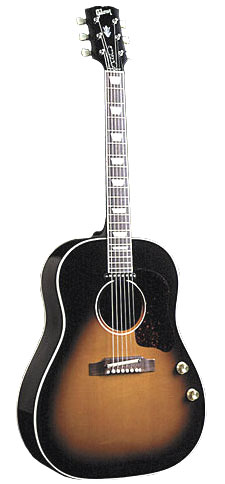 The verse uniquely comprises seven measures and features John and Paul's almost tongue-in-cheek hillbilly slurring of notes on the words "she" and "him," which shows them poking fun at the C&W music of their day. We then go into an identical repeat of the chorus, except for the absence of the guitar passage at the end. The verse uniquely comprises seven measures and features John and Paul's almost tongue-in-cheek hillbilly slurring of notes on the words "she" and "him," which shows them poking fun at the C&W music of their day. We then go into an identical repeat of the chorus, except for the absence of the guitar passage at the end.
The second verse then begins, which this time features the slurred hillbilly notes on "I" and "her." Then we see the bridge for the first time, which is an even four measures long. The dominant harmony line from Paul reaches the highest notes of the entire song, landing on the words "Oh, how long." The vocals in this bridge appear double-tracked for the first time which, by adding a subliminal fullness to the sound, makes this section the song's true highlight.
 Another unique feature of the bridge is its melodic downward arc which combines perfectly with the single-tracked chorus that immediately follows it, the effect being that we've gone from the highest note to the lowest note of the song within a combined ten measures. The lyrics show them fitting perfectly together, the last lyrical phrase of the bridge actually nudging its way into the first measure of the chorus. What we end up with here is the phrase "till she sees the mistake she has / made, Dear, what can I do," eliminating the word "oh" that usually starts off the chorus. Another unique feature of the bridge is its melodic downward arc which combines perfectly with the single-tracked chorus that immediately follows it, the effect being that we've gone from the highest note to the lowest note of the song within a combined ten measures. The lyrics show them fitting perfectly together, the last lyrical phrase of the bridge actually nudging its way into the first measure of the chorus. What we end up with here is the phrase "till she sees the mistake she has / made, Dear, what can I do," eliminating the word "oh" that usually starts off the chorus.
 The end of this chorus shows the return of Harrison's guitar passage, which then actually begins his guitar solo. This instrumental section is played against the chorus chord structure, comprising the usual six measures. The solo shows George bending notes throughout while not paraphrasing any melody line heard in the song, which was usually the norm for the rehearsed solos he would perform up to this time. While his pitch and timing were off on occasion, with a degree of awkwardness as the result, he is to be admired for his eager willingness to "mix-it-up" in the spirit of experimentation that The Beatles were reaching for. The end of this chorus shows the return of Harrison's guitar passage, which then actually begins his guitar solo. This instrumental section is played against the chorus chord structure, comprising the usual six measures. The solo shows George bending notes throughout while not paraphrasing any melody line heard in the song, which was usually the norm for the rehearsed solos he would perform up to this time. While his pitch and timing were off on occasion, with a degree of awkwardness as the result, he is to be admired for his eager willingness to "mix-it-up" in the spirit of experimentation that The Beatles were reaching for.
The solo goes directly into a repeat of the bridge and chorus as heard just before the solo, this time continuing the rich double-tracked vocals right through the chorus. Another new feature of the song appears, ever so quietly, in the form of a tambourine which appears to slightly increase in volume as the song progresses to the end.
 After this we see a repeat of the first verse, this time without cymbals and accenting the one and four beat of each measure. This move breaks the continual tension displayed throughout the song, with the effect of driving the focus onto the significance of the lyrics. A final repeat of the chorus follows with full orchestration as before. The song appropriately ends with George's guitar flourish bending and Ringo's tambourine shaking. After this we see a repeat of the first verse, this time without cymbals and accenting the one and four beat of each measure. This move breaks the continual tension displayed throughout the song, with the effect of driving the focus onto the significance of the lyrics. A final repeat of the chorus follows with full orchestration as before. The song appropriately ends with George's guitar flourish bending and Ringo's tambourine shaking.
 Even though the song was a pure 50-50 collaboration, the convincing illusion is that this is John's song, probably because of his singing the lower melody line. This has led many writers to assume John was the main contributor to this song, if not its sole author. Meanwhile, his acoustic rhythm guitar works well as efficient background to the mix. Even though the song was a pure 50-50 collaboration, the convincing illusion is that this is John's song, probably because of his singing the lower melody line. This has led many writers to assume John was the main contributor to this song, if not its sole author. Meanwhile, his acoustic rhythm guitar works well as efficient background to the mix.
 Paul keeps within the framework appropriate for country music with his bass work while effectively mastering his hillbilly higher harmonies without missing a beat. George struggles somewhat to convincingly adapt to the country landscape, but ends up with a suitable performance. Ringo ends up with the easiest end of the stick, not being required to do much more than keep a steady 6/8 time signature with a slight change of emphasis during the last verse. Overall, the performance shows the group with a confidence that reveals the pride they feel for this song. Paul keeps within the framework appropriate for country music with his bass work while effectively mastering his hillbilly higher harmonies without missing a beat. George struggles somewhat to convincingly adapt to the country landscape, but ends up with a suitable performance. Ringo ends up with the easiest end of the stick, not being required to do much more than keep a steady 6/8 time signature with a slight change of emphasis during the last verse. Overall, the performance shows the group with a confidence that reveals the pride they feel for this song.
The lyrics depict the frustration of the singer because he's trying to win over a girl while she's preoccupied with her deceased former boyfriend. "What can I do?" the singer asks, because he thinks "of her, but she thinks only of him." His patience is wearing thin, asking "how long will it take?" while viewing her longing for her ex as a "mistake" that she'll soon regret when he gives up. Though the singer harshly calls her feelings "a whim," it is only evidence of the song being a pastiche of country music anyway, not to be taken too seriously. And, of course, it rhymes with "him."
American Releases
 December 15th, 1964 saw the first release of the song on the Capitol album "Beatles '65." This #1 album sold over three million copies and acquainted American audiences with a more mature sounding "fab four." The album then appeared as an individual compact disc on January 21st, 2014, both the mono and stereo versions of the album contained on a single CD. December 15th, 1964 saw the first release of the song on the Capitol album "Beatles '65." This #1 album sold over three million copies and acquainted American audiences with a more mature sounding "fab four." The album then appeared as an individual compact disc on January 21st, 2014, both the mono and stereo versions of the album contained on a single CD.
 Sometime in 1967, Capitol released Beatles music on a brand new but short-lived format called "Playtapes." These tape cartridges did not have the capability to include entire albums, so two truncated four-song versions of "Beatles '65" were released in this portable format, "Baby's In Black" being on one of these. These "Playtapes" are highly collectable today. Sometime in 1967, Capitol released Beatles music on a brand new but short-lived format called "Playtapes." These tape cartridges did not have the capability to include entire albums, so two truncated four-song versions of "Beatles '65" were released in this portable format, "Baby's In Black" being on one of these. These "Playtapes" are highly collectable today.
 The first time the original British "Beatles For Sale" album was made available in the US was the "Original Master Recording" vinyl edition released through Mobile Fidelity Sound Lab in February of 1987. This album included "Baby's In Black" and was prepared utilizing half-speed mastering technology from the original master tape on loan from EMI. This version of the album was only available for a short time and is quite collectible today. The first time the original British "Beatles For Sale" album was made available in the US was the "Original Master Recording" vinyl edition released through Mobile Fidelity Sound Lab in February of 1987. This album included "Baby's In Black" and was prepared utilizing half-speed mastering technology from the original master tape on loan from EMI. This version of the album was only available for a short time and is quite collectible today.
The original British "Beatles For Sale" album was released on compact disc on February 26th, 1987 in mono only, the vinyl version coming out on July 21st, 1987. A stereo remastered edition was released on CD on September 9th, 2009 and on vinyl on November 13th, 2012.
 Another mono release in the US was on June 30th, 1992. The box set "Compact Disc EP Collection" came out on this date, "Baby's In Black" being included therein because of it appearing on the EP entitled "Beatles For Sale No. 2," which was originally released on vinyl in Britain on June 4th, 1965. Another mono release in the US was on June 30th, 1992. The box set "Compact Disc EP Collection" came out on this date, "Baby's In Black" being included therein because of it appearing on the EP entitled "Beatles For Sale No. 2," which was originally released on vinyl in Britain on June 4th, 1965.
 The single "Real Love" was released on March 5th, 1996 in conjunction with the "Anthology 2" album which also included this new Beatles recording. The vinyl version of the single contained a live version of "Baby's In Black" recorded on August 30th, 1965 at their second performance at the Hollywood Bowl in Los Angeles, California. The song begins with John Lennon's introduction for the song from their performance the day before on August 29th. The CD single also contained the song along with two other bonus tracks. This recording, remastered by Giles Martin, also eventually appeared on the September 9th, 2016 release "Live At The Hollywood Bowl" as a bonus track, this time including John Lennon's actual introduction from the day they performed it. The single "Real Love" was released on March 5th, 1996 in conjunction with the "Anthology 2" album which also included this new Beatles recording. The vinyl version of the single contained a live version of "Baby's In Black" recorded on August 30th, 1965 at their second performance at the Hollywood Bowl in Los Angeles, California. The song begins with John Lennon's introduction for the song from their performance the day before on August 29th. The CD single also contained the song along with two other bonus tracks. This recording, remastered by Giles Martin, also eventually appeared on the September 9th, 2016 release "Live At The Hollywood Bowl" as a bonus track, this time including John Lennon's actual introduction from the day they performed it.
 November 16th, 2004 was the date that the box set "The Capitol Albums, Vol. 1" was released, which featured both the stereo and mono versions of the original "Beatles '65" album. With just a touch of EQ, this was the way US fans first heard the song when it was initially released. November 16th, 2004 was the date that the box set "The Capitol Albums, Vol. 1" was released, which featured both the stereo and mono versions of the original "Beatles '65" album. With just a touch of EQ, this was the way US fans first heard the song when it was initially released.
September 9th, 2009 was the date the CD box set "The Beatles In Mono" was released which features an excellent remastered version of the original mono mix of "Baby's In Black." The vinyl edition of this box set first came out on September 9th, 2014.
Live Performances
 Lennon and McCartney were so proud of this song that they included it in their set lists extensively from late 1964 through late 1966. Their premier of "Baby's In Black" was a lip-synced taping for their third and final appearance on the British TV show "Ready, Steady, Go!" The taping was on November 23rd and the broadcast was on November 27th, 1964, nine days before the British album was released. Lennon and McCartney were so proud of this song that they included it in their set lists extensively from late 1964 through late 1966. Their premier of "Baby's In Black" was a lip-synced taping for their third and final appearance on the British TV show "Ready, Steady, Go!" The taping was on November 23rd and the broadcast was on November 27th, 1964, nine days before the British album was released.
 Manager Brian Epstein put together "Another Beatles' Christmas Show" for the Odeon Cinema in London, which ran from December 24th, 1964 through January 16th, 1965. These 38 performances (most dates had two shows a day) all featured "Baby's In Black" in the group's 11 song set list. Manager Brian Epstein put together "Another Beatles' Christmas Show" for the Odeon Cinema in London, which ran from December 24th, 1964 through January 16th, 1965. These 38 performances (most dates had two shows a day) all featured "Baby's In Black" in the group's 11 song set list.
April 11th, 1965 saw them return to the stage in the "New Musical Express 1964-1965 Annual Poll-Winners' All-Star Concert." "Baby's In Black" was one of the five songs they performed and was broadcast on the British TV special "Poll Winners Concert," which aired on April 18th.
 After filming and soundtrack recording for their second motion picture "Help!" was completed, they finally set off on another tour, this being a short 14-day European set of dates. "Baby's In Black" was included on this tour, which started off in Paris on June 20th, 1965. The two shows were filmed and taped for radio and television broadcast in that country. After filming and soundtrack recording for their second motion picture "Help!" was completed, they finally set off on another tour, this being a short 14-day European set of dates. "Baby's In Black" was included on this tour, which started off in Paris on June 20th, 1965. The two shows were filmed and taped for radio and television broadcast in that country.
 The song was also included in The Beatles' second American tour, which began at the momentous Shea Stadium concert on August 15th, 1965. The concert was filmed and shown in America, but surprisingly not until January 10th, 1967. Other noteworthy dates that included the song were the Hollywood Bowl concerts on August 29th and 30th, and the final date of the tour at the Cow Palace, San Francisco, California on August 31st. The song was also included in The Beatles' second American tour, which began at the momentous Shea Stadium concert on August 15th, 1965. The concert was filmed and shown in America, but surprisingly not until January 10th, 1967. Other noteworthy dates that included the song were the Hollywood Bowl concerts on August 29th and 30th, and the final date of the tour at the Cow Palace, San Francisco, California on August 31st.
 The Beatles' last tour in their home country covered eight cities in ten days. December 3rd through 12th brought the group through Glasgow, London and Manchester, and included their very last Liverpool concert at the Empire Theatre on December 5th, 1965. "Baby's In Black" was also heard during these shows. The Beatles' last tour in their home country covered eight cities in ten days. December 3rd through 12th brought the group through Glasgow, London and Manchester, and included their very last Liverpool concert at the Empire Theatre on December 5th, 1965. "Baby's In Black" was also heard during these shows.
 Even though The Beatles had meanwhile released two more British albums ("Help!" and "Rubber Soul"), as well as having just finished recording a third ("Revolver"), they still chose to include "Baby's In Black" in all of their 1966 concert dates. A brief international tour was first, which began in West Germany on June 24th, the second show on this date being taped and televised in that country. After revisiting their roots in Hamburg, they set off for Japan, portions of their June 30th and July 1st shows being broadcast on Japanese television at the time. After ending the tour on a disastrous note in the Philippines on July 4th, The Beatles headed home for about a month. Even though The Beatles had meanwhile released two more British albums ("Help!" and "Rubber Soul"), as well as having just finished recording a third ("Revolver"), they still chose to include "Baby's In Black" in all of their 1966 concert dates. A brief international tour was first, which began in West Germany on June 24th, the second show on this date being taped and televised in that country. After revisiting their roots in Hamburg, they set off for Japan, portions of their June 30th and July 1st shows being broadcast on Japanese television at the time. After ending the tour on a disastrous note in the Philippines on July 4th, The Beatles headed home for about a month.
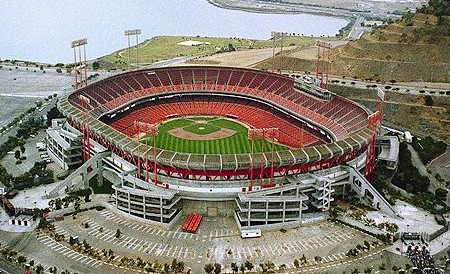 The band's final American tour also included the song, which started off in Chicago on August 11th, revisited Shea Stadium on August 23rd, and ended at Candlestick Park in San Francisco on August 29th, 1966. While this ended the Beatles history as a touring band, they went out performing one of their favorite songs, "Baby's In Black." The band's final American tour also included the song, which started off in Chicago on August 11th, revisited Shea Stadium on August 23rd, and ended at Candlestick Park in San Francisco on August 29th, 1966. While this ended the Beatles history as a touring band, they went out performing one of their favorite songs, "Baby's In Black."
 Throughout these tours, John would be the one to introduce the song, referring to it as "a slow song...it's a waltz, this one." Paul relates about the song, "We used to put that in there, and think, 'Well, they won't know quite what to make of this but it's cool." In Paul's "McCartney 3,2,1" Hulu documentary series from 2021, he stated about "Baby's In Black" that "we used to want to do this on stage. It wasn't a big fan favorite...it would be hard to dance to. We were kind of proud of this one. We thought we were kind of getting really funky-folk." Throughout these tours, John would be the one to introduce the song, referring to it as "a slow song...it's a waltz, this one." Paul relates about the song, "We used to put that in there, and think, 'Well, they won't know quite what to make of this but it's cool." In Paul's "McCartney 3,2,1" Hulu documentary series from 2021, he stated about "Baby's In Black" that "we used to want to do this on stage. It wasn't a big fan favorite...it would be hard to dance to. We were kind of proud of this one. We thought we were kind of getting really funky-folk."
Conclusion
 While the subject of romantic difficulty was very common in their first couple of years, The Beatles began to deviate into broader topics as 1965 came along, such as insecurities ("Help!"), writers block ("Nowhere Man") and reflections of the past ("In My Life"). 1966 saw them pull away even further, with 1967 and beyond showing that 'the sky was the limit' as to subject matter. While the subject of romantic difficulty was very common in their first couple of years, The Beatles began to deviate into broader topics as 1965 came along, such as insecurities ("Help!"), writers block ("Nowhere Man") and reflections of the past ("In My Life"). 1966 saw them pull away even further, with 1967 and beyond showing that 'the sky was the limit' as to subject matter.
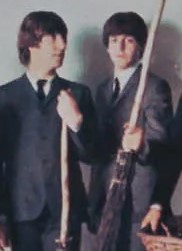 But as it was in late 1964, The Beatles were hinting at growth. The subject matter might have been used a lot, but not with such a morose spin as mourning the death of a former boyfriend. John and Paul were already looking for ideas to expand upon, both lyrically and musically. "Baby's In Black" exists as a stand-out album track in just about everyone's book. Performance wise, it's pure Beatles. And to quote McCartney's view of the song, "it's cool!" But as it was in late 1964, The Beatles were hinting at growth. The subject matter might have been used a lot, but not with such a morose spin as mourning the death of a former boyfriend. John and Paul were already looking for ideas to expand upon, both lyrically and musically. "Baby's In Black" exists as a stand-out album track in just about everyone's book. Performance wise, it's pure Beatles. And to quote McCartney's view of the song, "it's cool!"
Song Summary
"Baby's In Black"
Written by: John Lennon / Paul McCartney
-
Song Written: July 1964
- Song Recorded: August 11, 1964
- First US Release Date: December 15, 1964
- First US Album Release: Capitol #ST-2228 "Beatles '65"
- US Single Release: Apple #NR 7243 8 58544 7 7 (b-side to "Real Love")
- Highest Chart Position: n/a
- British Album Release: Parlophone #PCS 3062 "Beatles For Sale"
- Length: 2:02
- Key: A major
- Producer: George Martin
- Engineers: Norman Smith, Ron Pender
Instrumentation (most likely):
- John Lennon - Lead Vocals, Rhythm Guitar (1962 Gibson J160E & 1964 Rickenbacker 325)
- Paul McCartney - Lead Vocals, Bass Guitar (1963 Hofner 500/1)
- George Harrison - Lead Guitar (1963 Gretsch 6119 Tennessean)
- Ringo Starr - Drums (1964 Ludwig Super Classic Black Oyster Pearl), tambourine
Written and compiled by Dave Rybaczewski
|
IF YOU WOULD LIKE TO MAKE A DONATION TO KEEP THIS WEBSITE UP AND RUNNING, PLEASE CLICK BELOW!
|